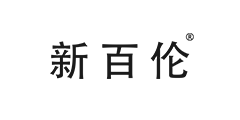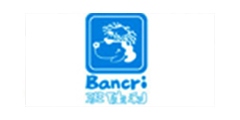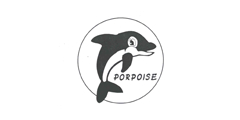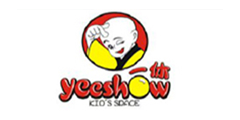上学期,海归为12年级的几位艺术学生
举办了首届DP视觉艺术展。
那些作品的真挚与力量,
曾带给我们深深的震撼与感动。
如今,学生们都已身处世界各大院校,
继续着自己对艺术的探索,对人生的反思。
而在海归,新一代的年轻艺术家也正在
默默生长,奋力崛起。
今天您将看到的,
是海归11年级的5位学生
在本学期视觉艺术第一单元中,
以“重复”为主题的系列作品。

DP视觉艺术老师Casper Whiteman为我们介绍了 “重复” 这种艺术手法在作品中的使用:
作为创造力的基础之一,重复有助于在艺术品中创造一种运动感。它是特定线条、图案、形状或其他视觉元素的再现。
有时候,重复是为了在没有变化的情况下营造一种紧张感,而理解这些作品的关键往往在于微妙的细节。使用重复的图案,增强了作品表面的张力,使受众更受吸引,同时,也为构图增添了一种秩序感。
在开始创作之前,学生们也通过Andy Warhol、Tara Donovan、Willie Cole、草间弥生等艺术家的作品学习“重复”这种艺术手法如何成为艺术家们传达思想与情感的绝妙工具。
“艺术中的重复元素被用来评论我们周围世界的状态,并向公众发出挑战,以让人们放慢追求消费主义的步伐。” Mr. Whiteman说, “作为一种工具,艺术中的重复不仅有助于构建作品的视觉部分,而且通常为艺术品提供更深层次的意义,隐藏更具哲学性和概念性的含义。”
正如草间弥生热爱圆点,是因为在她眼中,宇宙中存在着无穷无尽的圆点。
在学生们的作品里,不仅有艺术创作的过程及技巧的重视,更有对“概念”的强调——“某个对象代表什么,当应用重复性元素时,对象的含义是否会发生变化?”
围绕着“重复”这一艺术元素,学生们创作出了主题各异的独特作品,表达着年轻的学者们对宗教、空气污染、女权主义、动物贸易及社会权利斗争等问题的思考。

01
The Black and The Red
创作者:G11王嘉曦
这个名为《红与黑》的作品由多个黑色的拳头与一只红色大拳组成,它的灵感来源于司汤达的同名小说。
深受小说的影响,王嘉曦用被红色与黑色油漆包裹的拳头来探索反叛与理性、个人与集体主义等议题。而红与黑这两种极具反差的颜色传达着一种戏剧化的冲突与力量感。
断掉的中指被王嘉曦称之为“无意之美”,它来源于从模具里取出石膏时的一个小小意外。王嘉曦“将错就错”,在断指上套上了一枚“盖吉斯之戒”,以此更深入地探讨理性与道德问题。


02
Untitled
创作者:G11吴心洁
多个用石膏制成的贝壳,粘在一个女性身体模型上。吴心洁用这个作品来探讨“女性赋权”。
她说,贝壳在文化艺术中常常代表着女性气质,象征着诞生、好运及复活。如今,这些贝壳仿佛被装饰在女性的盔甲上,像一种护卫,保护女性不受父权及刻板期望的影响。
整个作品颜色统一,外壳有如皮肤一般,成为身体自然生长出的一部分。而它放置的高度也有一定的巧思,为作品增添了尊严与力量感。

03
Birds of Paradise
创作者:G11王霏
在王霏的作品中,她专注于表现环境与空气污染对鸟类的影响。
她用了20个白色石膏鸟模型。它们翅膀展开并交错排列,模拟鸟类在空中的飞行。而它们身上的木炭颗粒与烟雾渲染代表着空气污染等问题给动物所带来的伤害。


04
Mahakala
创作者:G11张可心
这是一个以宗教为主题的作品,灵感来自于唐卡。它由数个蓝色的玛哈嘎拉石膏像以及一个较大的红色玛哈嘎拉石膏像组成,背景是一张有着红色苔藓的毯子。石膏雕像上的霉斑与人造苔藓相呼应,象征着佛教中的“时间”概念。
作品中,张可心尝试用夸张的唐卡元素来体现宗教艺术的创造性和继承性,希望观众可以通过作品感受到:佛教的影响力不会随着时间而消失,唐卡独特的艺术风格也将随着时间的推移而越发具有古韵和深度。

05
Feathered Captives
创作者:G11杨雨轩
这个作品的主体是一个黑色的、飞鸟形状的金属丝笼,当中是约70只石膏制成的虎皮鹦鹉,被密密麻麻地塞在笼子里。在鸟笼上方,还有一排鹦鹉被悬挂着,远看似乎像在飞翔,但它们的翅膀合拢,丧失自由,飞翔只是一种观者的一种想象。
杨雨轩选择了虎皮鹦鹉为创作对象,是因为它们非常常见,这种自19世纪以来一直被人类圈养的鸟类,健康状况令人担忧。
除了“重复”所营造的紧张感,对动物权益的深切关注,也体现在她对颜色的使用上。黑色与明黄色的鲜明对比,类似于警示牌的颜色搭配,营造出一种警示效果。色彩饱和度的变化也暗示着动物们的绝望——即使逃出了笼子,它们仍然没有生机。

Tara Donovan曾说,自己的作品并不是要模仿大自然,而是要模仿自然存在与生长的方式。
其实,所有的艺术作品都是一种对世界的观察和评论。
在这些海归11年级的学生作品中,艺术的“外在形式”及“内在意义”都得到了出色的展现。
正如Mr. Whiteman所说:
“学生们在概念和工艺的重要性上表现出了深刻的理解,我感到无比自豪。我很期待这些才华横溢的学生接下来的作品。”
这“接下来的作品”大概就是明年的DP视觉艺术展。
Mr. Whiteman也在对学生们表示赞赏之余,为我们大致介绍了这个众所期待的展览。
G11视觉艺术的学生在“重复”单元中表现出了极大的活力和韧劲。第一个单元对于学生艺术实践中的概念发展至关重要,并为在IB DP最后一年的展览创造出具有凝聚力与技术水准的作品奠定了基础,届时,学生们将精心策划,以一种有趣和吸引人的方式,向整个社区展出自己最好的作品。作品的评估将基于四个具体标准:规划和构思、概念能力、创作和探索、艺术技巧。
除艺术作品之外,学生们还将完成一个“过程作品集”,记录着大家作为艺术家的成长过程。学生们将精选材料,记录他们的艺术创作实践与发展过程。“过程作品集”展示了学生对艺术创作实践、批判实践和概念实践的参与,其评估标准将包括:技能、技术和过程、调查、沟通、回顾、精炼、反思、展示及特定语言的应用等。
每一件作品都将附有艺术家陈述,学生将在陈述中解释他们的创作过程,包括动机、灵感、目标和方法等,同时还涉及对媒介的选择以及工具和技术的使用等方面。
如今,几位年轻的艺术家们正在海归慢慢成长,且让我们怀抱期待,静待花开。
Last semester, we have been successfully running the very first DP Art Exhibition
for our graduate students in our campus
The sincerity and power of those works conveyed,
brought us unforgettable movements.
Today, all graduates have furthered their study in most well-known universities around the globe,
pursuing their art exploration as the reflection to their real life.
Meanwhile, our G11 young artists are also preparing
to demonstrate what their potentials are.
Today, what you'll see
Is our five students from G11,
presenting their artwork in their first module of visual arts this semester,
a series of works with a theme named "Repetition".

DP visual arts teacher Casper Whiteman introduced us to the usage of "repetition" as an artistic technique in our work:
As one of the basics of creativity, repetition, helps to create a sense of movement within an artwork. It is a recurrence of a particular line, pattern, shape, or other visual elements.
Sometimes the repetition is used to build a sense of tension if no variations are used, and it is often in the subtle detail that the key to the understanding of such pieces lies. Working with repeated patterns, the surface of the work is enhanced, therefore made more interesting to the public, and at the same time, a sense of order is added to the composition.
Before creating their own artwork, students also learnt how "repetition" is a great tool for artists to deliver their thoughts and emotions through their artwork such as Andy Warhol, Tara Donovan, Willie Cole, and Yayoi Kusama.
The element of repetition in art id used on purpose to comment on the state of the world around us and to challenge the public to slow down the race for the achievement of consumerism. As a tool, repetition in art helps to build not only the visual part of the work but it often provides a deeper meaning to the artwork, hiding a more philosophical and conceptual identity.
As Kusama loves dots, what she perceived is dots are the endless form in the universe.
In the students' works, creation is not a simply emphasis on the procedure of creation, nor the technique, more is the appearance of concept, where we can use fundamental element to represent a particular subject. In addition, what new meanings we could illustrate when it comes to alter the meaning that we present in a form of repetition.
In this module, students create their unique works with different themes, expressing their reflections in vast topics that constantly generate social awareness, areas such as religion, air pollution, feminism, animal trade and social rights.

01
The Black and The Red
Creator: G11 Wang Jiaxi
The work is composed of multiple small black fists (resembles a troop or a crowd) and one large red hand (referencing rebellion and uniqueness) with its middle finger adorned with a metal ring laying beside it.
This piece of artwork references Stendhal Marie-Henri Beyle’s book entitled The Red and The Black. Stendhal explores themes such as individualism, passion, and the pursuit of happiness. I was profoundly influenced by this novel, therefore I decided to use the colours red and black to paint the surface of the fists to explore the idea of rebellion.
As she spoke, the broken middle ginger was “unintentional creation of beauty”. It occurred when she accidently broke the finger coming out of mold. Further, the middle finger is adorned with a metal ring to reference the principle of invisibility. It refers to the story The ring of Gyges as I put a huge ring on my chopped down middle finger.


02
Untitled
Creator: G11 Wu Xinjie
The artwork is created with repeated seashells, made from plaster, which have then been adhered to a torso of a female body model. The work represents the empowerment of women.
Culturally and in art the seashell has many connotations; it is usually perceived as feminine, a symbol of birth, good fortune and resurrection. The seashells are adorned on the female form armor and is suggestive of how a warrior would put on armor in war as a means to protect the body. It is a kind of imaginary protective shield to protect women from patriarchal and stereotypical expectations.
The entire sculpture in unified by color which gives it a skin like appearance. Color further groups the shells and female plastic form to make it appear as if the shells are part of the body, growing out of the body. And a certain height that this piece of artwork aimed to demonstrate certain levels of dignity and strength.

03
Birds of Paradise
Creator: G11 Wang Fei
In Wang Fei’s work, what she was trying to represent was the focus on the cause and effects of air pollution and environmental devastation on birds.
She used twenty plaster bird models, and all models were made to look like birds flying with their wings spread and arranged in a staggered pattern to simulate the flight of a bird in the air. The charcoal particles on top of the plaster bird model surrounding smoke were used to simulate real life air pollution damage to the birds to reflect the severity of air pollution and environmental issues.
She hoped that through this display to call on the community to pay attention to environmental issues. It is also a call to action to protect birds and reduce air pollution.


04
Mahakala
Creator: G11 Zhang Kexin
This face style was inspired by an image of Mahakala in Buddhist art also known as Tang-ka. The artwork consists of several small blue plaster faces of Mahakala and a large orange-red plaster face of Mahakala, with an artificial blanket of red moss in the background, the mold on the plaster statue echoes the artificial moss, representing “time” in Buddhist concept.
This is a religious-themed work inspired by Donka. It consists of several blue Mahagara plaster statues and a large red Mahagara plaster statue, with a blanket of red moss on the background. The moldy spots on the plaster statue echo the artificial moss, symbolizing the Buddhist concept of "time".
In the works, Zhang Kexin attempts to make use of exaggerated Tang-ka elements to note the creativity and inheritance of religious art, in order to arouse people's interest in Buddhist culture-------the Buddhist spirit do not fade away as time go by, and the unique artistic style it brings which is Tang-ga will become more and more archaic and deep with time.

05
Feathered Captives
Creator: Yang Yuxuan
This sculpture consists of around 70 budgerigars, where the majority are stuffed in the cage while a few are hung by strings above the cage in a line formation. The line of birds suspended above the cage looks like they are flying, but with their wings folded and tied up with strings, it represents there were no lightness and freedom as if the flight is only imaginary.
Budgies are chosen by Yang Yuxuan as the main subject of the artwork as they are a common type of pet birds which is usually sold in bird markets. They were in captivity since the 19th century, and the welfare of these birds is still worrying.
In addition to the tension created by "repetition", the deep concern for animal rights is also reflected in the use of color. The choice of color of the birds and the cage is mainly intended to create an obvious contrast with the black and the bright yellow, it resembles the color combination of warning signs, therefore it allows the sculpture to easily attract attention and create an alarming feeling. The ascending line of color reduction shows that even though they have escaped the cage, there is still no chance of survival.

Tara Donovan once said, it is not like I'm trying to simulate nature. It's more of a mimicking of the way of nature, the way things actually grow.
In fact, all works of art are a product of observations and commentaries to the world.
The "external form" and "inner meaning" of art have been excellently displayed through these works of students.
Mr. Whiteman said,
The students have demonstrated a deep understanding in concept and the importance of craftsmanship, I could not be prouder. I look forward to what these talented students will create next.
“Next” probably refers to the DP Exhibition coming in the next year.
Mr. Whiteman also drew a general picture of what we are expecting the “next”.
The Grade 11 Visual Art students have displayed great vigor and tenacity in the first unit entitled ‘Repetition’. The first unit is vital in the conceptual development of their artistic practice and lays the foundation for creating a cohesive and technically sound artwork in preparation towards an exhibition at the end of their final year of IB DP Visual Art, in which the students will present a selection of their best work in the form of a curated final show. The exhibition is an opportunity to show their artworks to the community in an interesting and engaging way. The artwork is assessed based on four specific criteria including planning and ideation, conceptual competence, creation and exploration and technical competence.
Accompanying the artwork is a process portfolio which is a collection of evidence of their development as an artist where students carefully select materials that document the development of their art-making practice and processes. The process portfolio displays the student’s engagement with the art-making practice, critical practice, and conceptual practice. The process portfolio is assessed on skills, techniques and processes, critical investigation, communicating ideas and intentions, reviewing, refining, and reflecting as well as presentation and the use of subject specific language.
Each artwork is submitted and displayed with an artist statement in which the students explain their creative process, including their motivations, inspirations behind, mission, and methods. It also includes their choice of mediums and use of tools and techniques.
Let’s hope for the best, witnessing what our talented young artists will bring to us in the upcoming year.


























